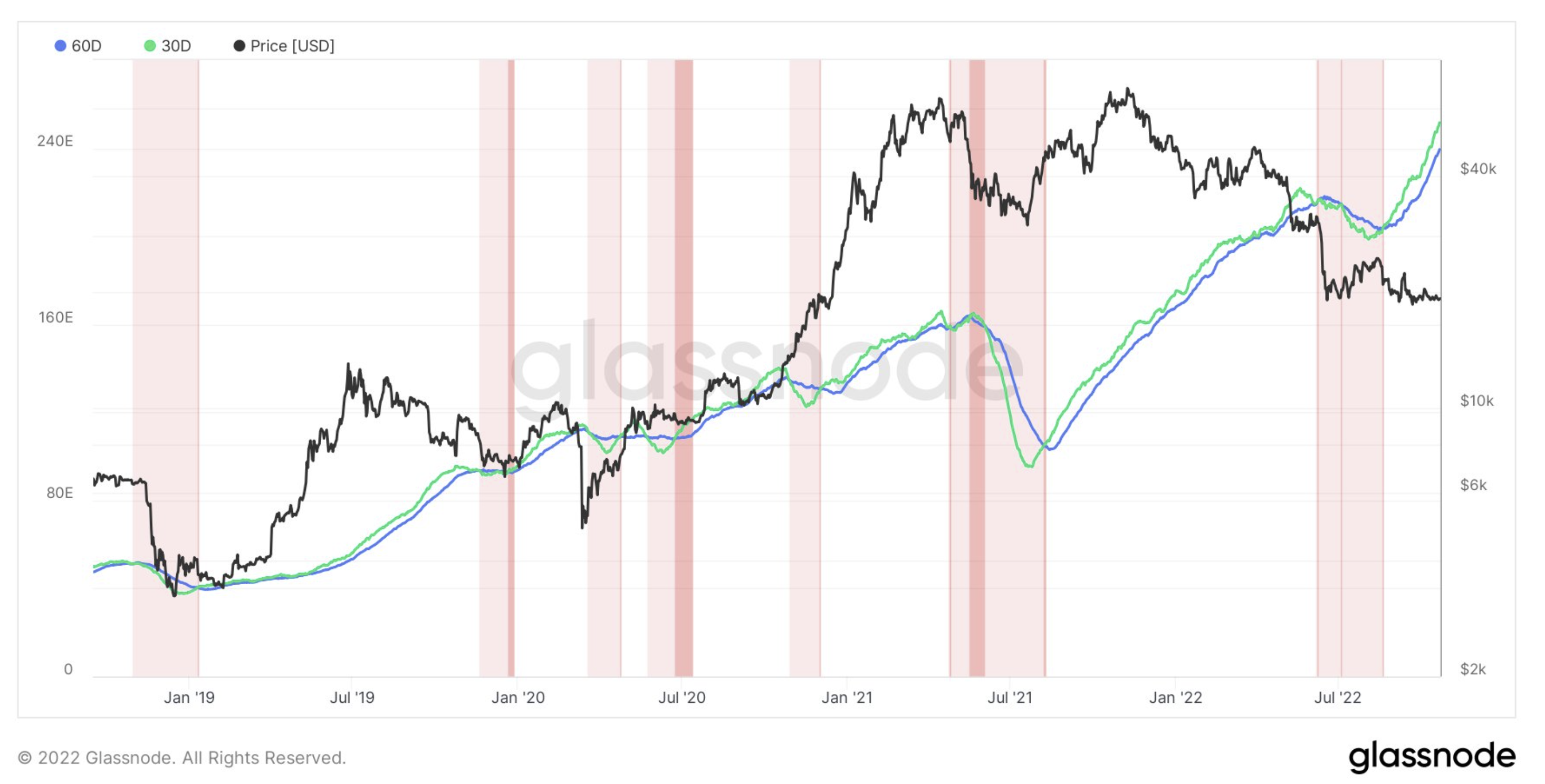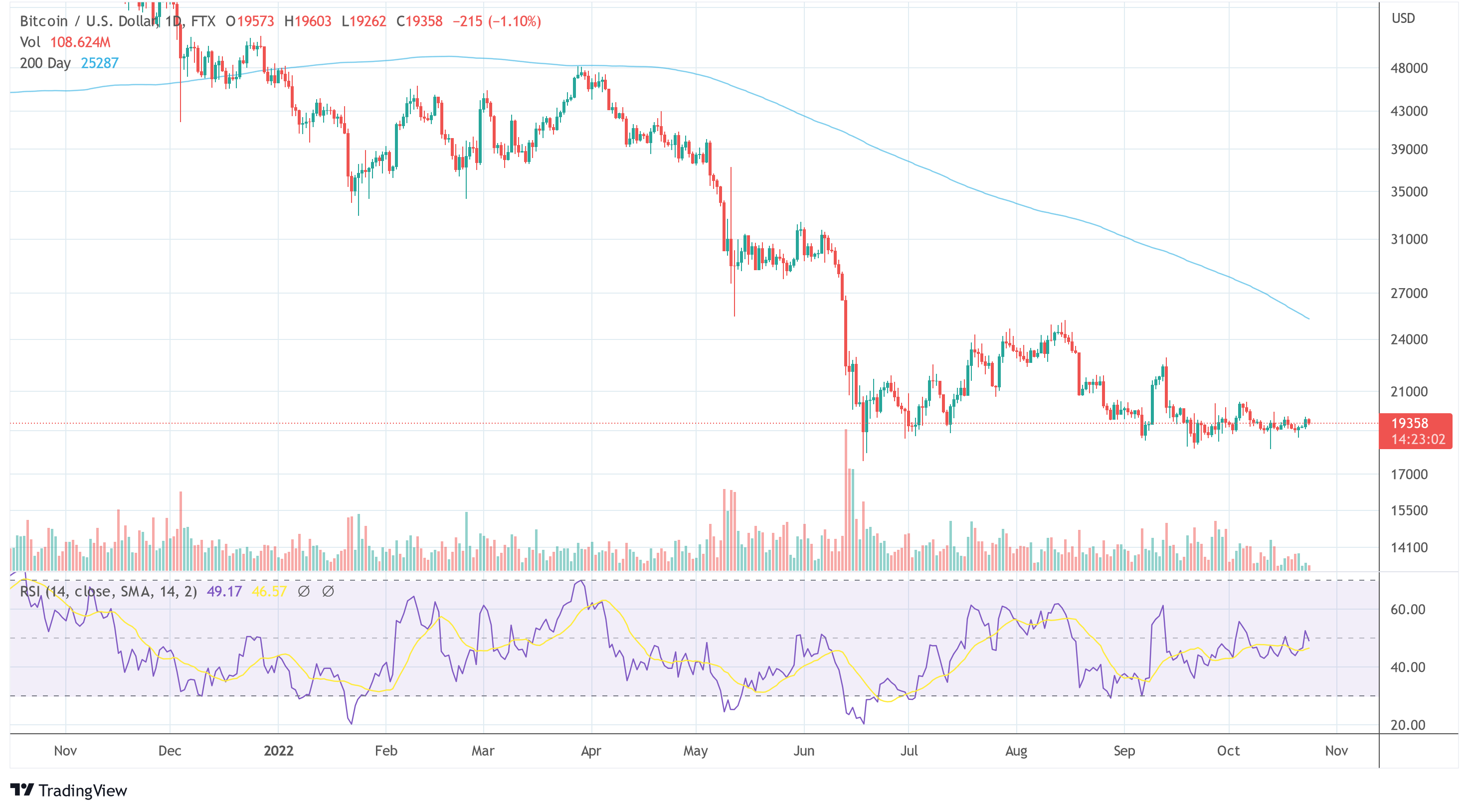Federal Reserve (FED) monetary policy continues to be the overriding factor for both global financial markets and Bitcoin. With this in mind, all eyes are currently on November 2, when the next Federal Open Market Committee (FOMC) meeting is scheduled.
While this is an external market risk, there is also currently developing an internal market risk that should not be underestimated from a historical perspective: a Bitcoin miner capitulation.
The lower Bitcoin falls and the longer the price remains at its current level, the more pressure is put on Bitcoin miners’ margins due to a divergence of price and hash rate.
Bitcoin’s Mining Problem Reaches a New ATH
A look at the Bitcoin mining difficulty adjustment that took place yesterday shows it is up 3.44% again. This follows the historic adjustment of October 10, when mining difficulty increased by 13.55%.
#Bitcoin the mining difficulty just increased +3.44% which is another new record as the hash rate continues to increase.
Miners are ruthless. pic.twitter.com/4GEyHxYoZ8
— Dylan LeClair 🟠 (@DylanLeClair_) October 24, 2022
The difficulty is updated approximately every two weeks to account for the fluctuating hash power on the network and to generate new Bitcoins approximately every 10 minutes (block time).
So yesterday’s adjustment is likely to put even more pressure on the already struggling miners who are seeing dwindling profits. Will Clemente, co-founder of Reflexivity Research, claimed that “miners are the biggest intra-Bitcoin market risk right now IMO”.
A compelling theory for the steady increase in hash rate, he says, is that a well-funded player is trying to squeeze out inefficient miners and acquire their assets on the cheap “Rockefeller style.”
As a result, a miner capitulation could take place. During this event, the unprofitable miners would have to sell their mining hardware as well as their holdings of Bitcoins. On a large scale, this could put significant selling pressure on Bitcoin price, as seen in past miners’ capitulations.
Clemente stated that the likelihood of a second capitulation of miners after the first period in June increases. The leading indicator to watch is the hash ribbons.

Clemente concluded:
If you think about who these entity(s) are who believe that it is beneficial to mine with a BTC price that has fallen by 70%, high energy prices and an all-time low. Wonder if it is a big player(s) with excess energy or access to dirt cheap energy. […] That’s why I’m so curious because this must be someone with extremely low energy costs. Haven’t seen any good answers so far.
Big Name Bitcoin Miners in Trouble?
Dylan LeClair, senior analyst at UTXO Management and co-founder of 21stParadigm as well noted that the hash price, or miner’s earnings per TeraHash, recently passed the 2020 low. If history repeats itself from past bear markets, the price decline has just begun, he said.
In addition, he revealed that he has “heard some juicy rumors about some big Bitcoin miners getting in trouble here”.
The continued mounting pressure on Bitcoin miners could end in two scenarios, he says. Or this is the bottom. “The lack of full shows apathy from sellers. Extended consolidation/accumulation period,” said LeClair.
However, the scenario considered more likely by the analyst is that BTC has currently reached a level of $6,000 in 2018/2019. If the hash rate continues to rise, the increasing pressure will result in a capitulation of miners.
At the time of writing, BTC price continued to lack volatility and hover around $19,300.













